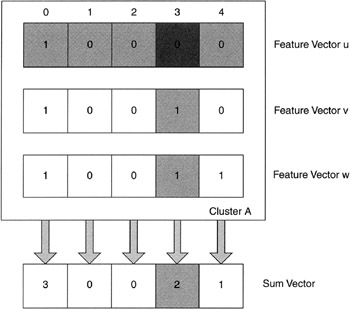Using ART1 for Personalization
Let's now look at the application of the ART1 algorithm to the problem of personalization. First, let's define and better understand personalization.
What Is Personalization?
The idea of personalization is not new, traditional companies have been doing it for quite some time. The rise in popularity of personalization is due primarily to the advantages of using it in Web environments. Commercial Web sites permit near real-time personalization ”before a consumer makes a purchase, the site can recommend other items that are likely to appeal to the customer. This time is critical to the seller since they can alter buying behavior of the customer prior to the purchase in the hopes of increasing their revenue.
Achieving Personalization
Personalization involves taking some set of inputs and returning one or more recommendations to the user through some type of computation. The method by which personalization is performed varies depending upon the type of data available for input, the required representation of the output, and in some cases the speed and accuracy by which the output must be computed.
Many companies use a variety of methods to achieve personalization. Most algorithms (or methods for tuning existing algorithms) are kept secret since they represent strategic importance to the owner. Amazon.com uses a method called "Collaborative Filtering," which provides recommendations based upon the similarity of a customer's purchases to the purchases of others. A similarity metric is used to extract a subgroup of customers from the stored population. Given this sub-population, recommendations are made based upon differences identified between the members .
Personalization Using ART1
Using ART1 for personalization involves two steps. First, we perform the standard ART1 algorithm on our feature vectors (customer data). Next, to make a recommendation, we analyze the feature vector (representing the customer to which we're going to make a recommendation) as well as a new element called the sum vector. The sum vector, not part of ART1, represents the sums of the columns of the feature vectors within the cluster (see Figure 3.6).

Figure 3.6: Recommending an item using the feature vector and sum vector.
Let's look at the process of recommendation by way of an example. Let's say the customer to whom we're going to make a recommendation is represented by feature vector u, which is a member of cluster A. The contents of the feature vector follow the example given in Figure 3.1 (purchase history of customer). We first look at the sum vector to identify which items (columns) are represented by the cluster (those with non-zero values). We then find the largest value item in the sum vector that corresponds with an element in the customer's feature vector of value zero. This represents an item that the customer has not purchased that is popular within the cluster. This intersection is the basis for the recommendation. The assumption (or statistical prediction) is that since 66% of the customers within this cluster have purchased this item (given item three within the example), it's likely that the current customer might purchase it as well.
| On the CD | The source code for the ART1 algorithm can be found on the CD-ROM at ./software/ch3/. |
EAN: 2147483647
Pages: 175